Few games are as divisive as Burnout Paradise.
It eschewed the traditional Burnout ‘ribbon’ of road, taking its barnstorming gameplay into an open-world city. Some have never forgiven its developer, Criterion, for going open-world, especially as we never saw another official old-style Burnout game after it.
There’s bitterness still evident in many corners of the internet. But here’s the thing: It’s been out for 15 years and – regardless of whether it should have gone open-world or not – there’s still a strong argument that it remains the best open-world racing game, especially in its ‘Remastered’ incarnation.
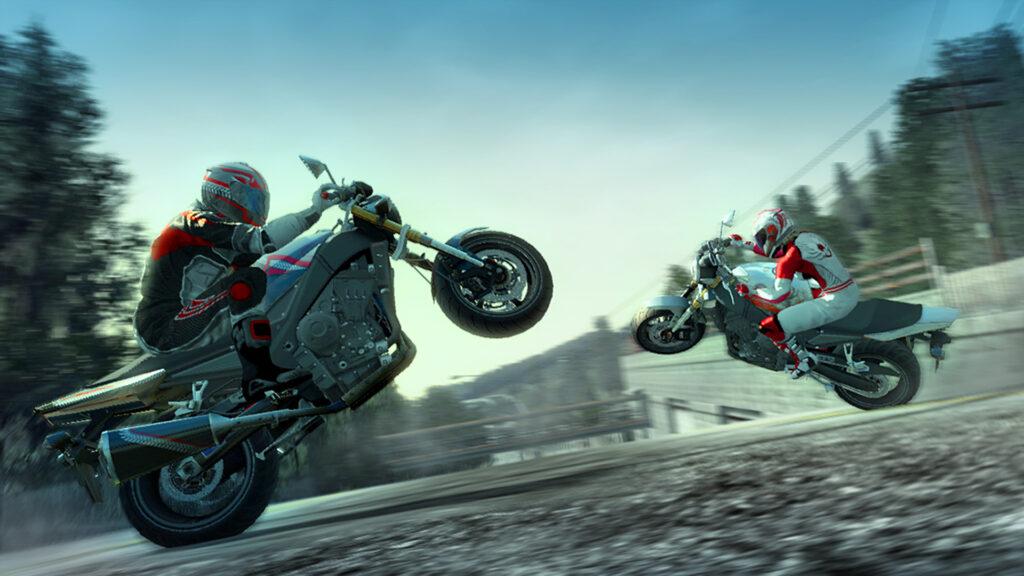
Its feature list sounds like stating the bleeding obvious in terms of what an open-world racer should contain. A sunshine atmosphere with blue skies, glistening waters and an absolutely stonking licensed soundtrack. Lightning-fast, exhilarating gameplay at 60fps, which not even Criterion’s next stab at the genre managed, namely Need For Speed: Most Wanted.
Exemplary, seamless online integration that’s everything The Crew wanted to be. A full-fledged stunt and combo system that makes Dirt 5’s dedicated stunt events look pathetic in comparison. Crash damage rivalled only by Wreckfest and with even greater destructive scope. Varied gameplay with smashable objects to find, riotous takedown events, survival sprints and even an achievement for sliding perfectly into a parking space.
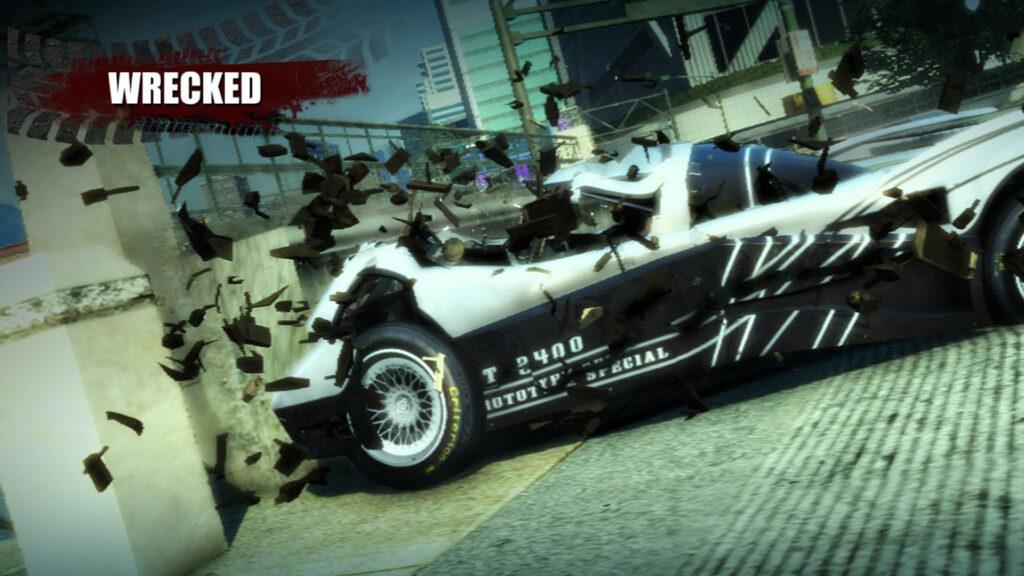
But above all this? The reason it’s so good is that it doesn’t play like other online racers. It feels sharper in its delivery. And that’s all about one word: curation.
By ‘curation’, I mean careful directorial control over what the player sees, hears and feels as they drive. Paradise City is probably the smallest open-world sandbox in modern gaming, but that’s one reason why it’s so good.
It’s a common and relatively recent misconception that bigger is better. A smaller game world affords more time per square mile to curate the experience. If an open-world game allowed you to drive around a map the size of the USA, it wouldn’t be humanly possible to make every road a riveting and memorable experience.
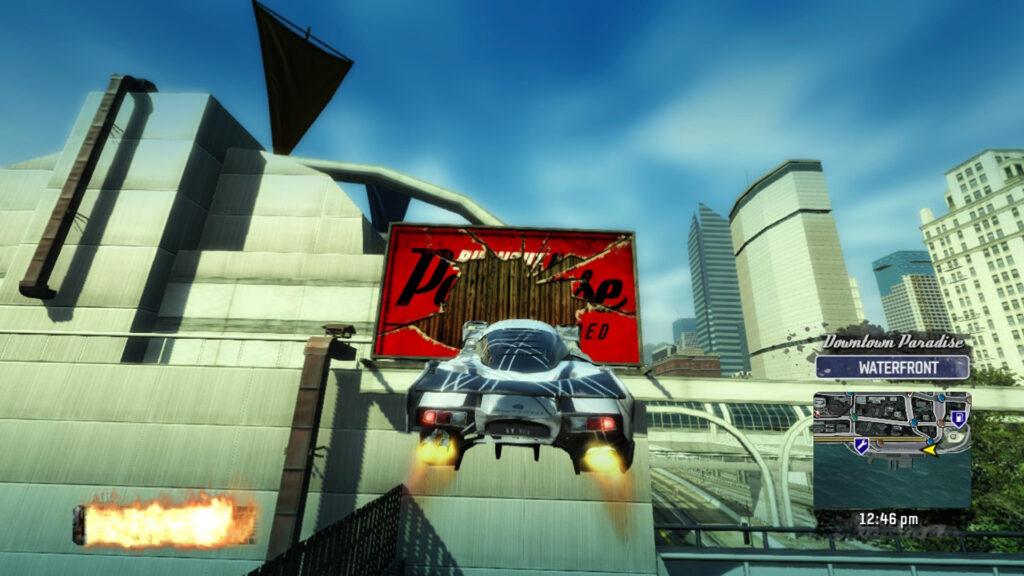
For example, compare the three circuits in Daytona USA to any of the tracks in its arcade contemporary, Cruis’n USA. The latter has more tracks, but the experience feels diluted. Every single corner in Daytona USA has something to offer, be it a memorable view, a pleasing powerslide opportunity, or – more usually – both at the same time.
While Burnout Paradise has hundreds more corners than that game and so can’t quite equal that level of directorial brilliance, the same sense of direction is present. Everything is placed with meaning, with specific intent.
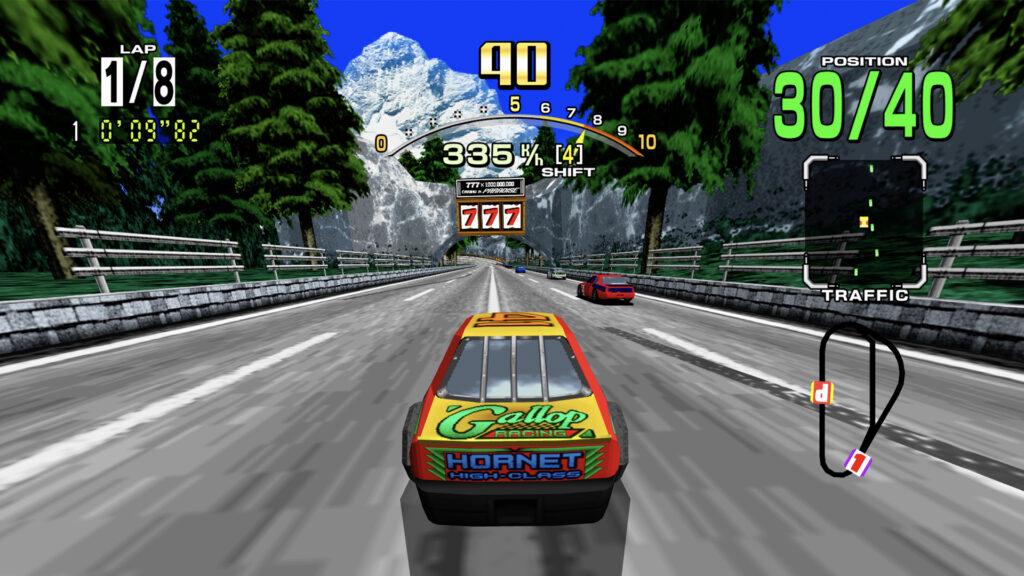
It’s important to note that track racers are way easier to essentially script a player’s experience than an open-world game. But that’s where Burnout Paradise differs from most other open-worlders. While you can steer off the track, drive into a parking lot and take in the view from the roof, the roads still play like the ‘ribbon’ racing of the previous games in the series.
You can feel the beats in a storyboard of moments that’s been carefully planned for you, like taking the back route around the Wildcats Stadium up to the do-or-die billboard break, or taking on the seafront boardwalk ramps in a stunt run. The roads have been designed to be fun, and interactive elements have been placed cannily to allow you to rely on reactions and instinct, with inevitable, beautiful disaster at the end almost being a reward for reckless abandon. It’s impeccably designed, clearly playtested extensively, and honed to a fine sheen.
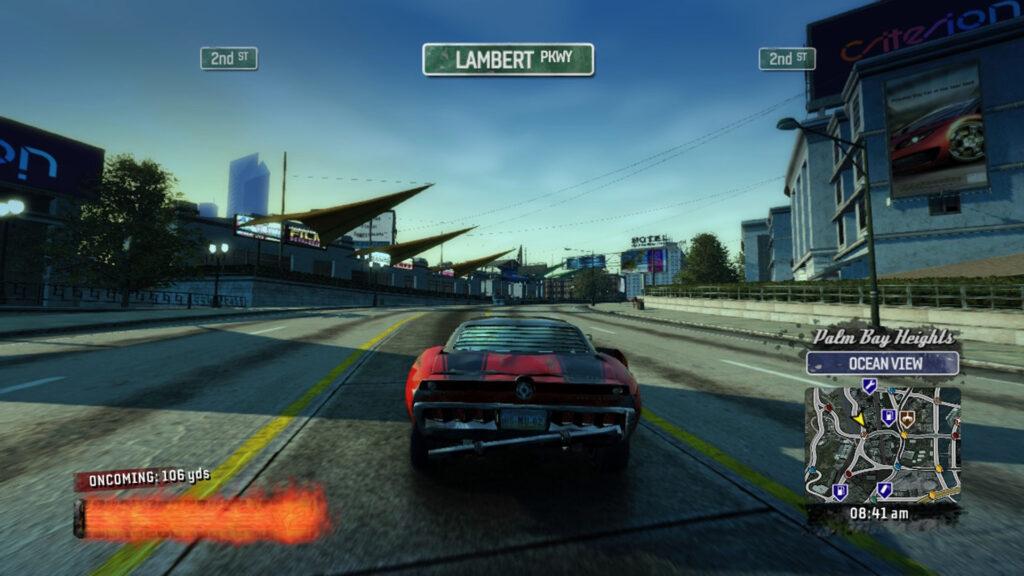
But it’s also very clever at making everything look fast. You are doing a decent enough lick through the city streets as it is, and the 60fps update certainly helps, but Burnout Paradise knows how to maximise that feeling. There are frequent low-hanging trees, street lights and power cables slung overhead, and even the architecture often has protruding awnings in order to place geometry closer to the player, increasing the sensation of speed.
Other games are fast, but very few are Burnout fast.
At this point, let’s note that the competition has never managed to do all of these things as well in the same package. Most open-world racers target 30fps (on console at least), have universally inferior crash damage and limit their gameplay scope to racing, set stunt courses and sprawling collectathons.
Even fewer focus on how it feels just to control the game – another dying art form in general. Back in the 1980s and 1990s, the best games just felt different. A lot of the pleasure from visiting an arcade and seeing state-of-the-art computer programs simply came from watching them in motion, let alone having the privilege to actually take control. Burnout Paradise is still breathtaking to watch, and even non-gaming family members get into the game when it’s on.
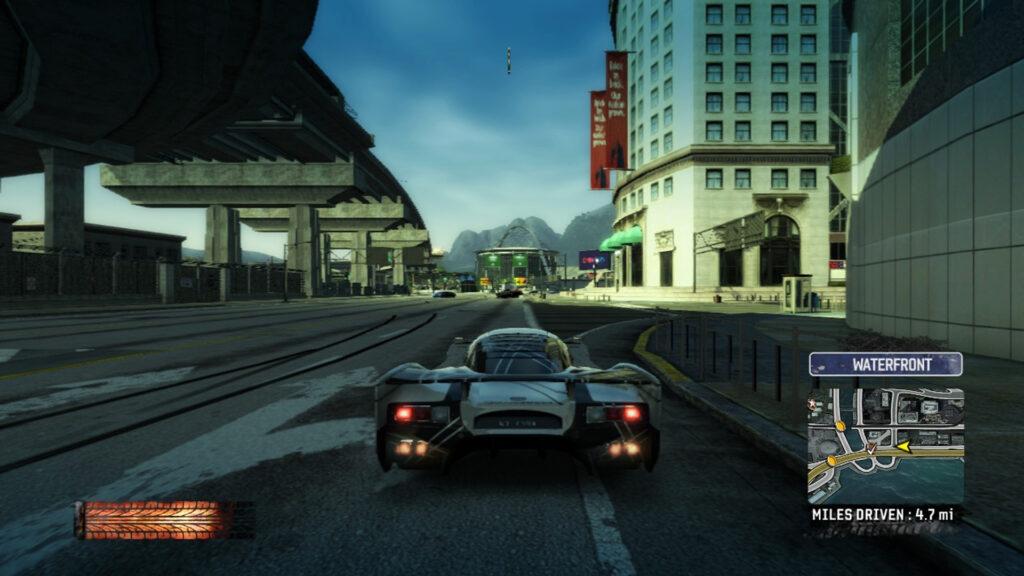
So that’s the case for the game, but we should also examine the case against.
There is one more elusive element in open-world racing games, and that’s the feeling of actually driving a real car. For all its shortcomings, the original The Crew nailed the feeling of being in a car with the radio on (even if it did just seem to have the Arctic Monkeys on a loop), something that Need For Speed Underground 2 arguably did first.
There is something magical about just driving through a neon-lit city at night with rain-slicked streets and the radio playing. Burnout Paradise doesn’t make you feel like you’re in the car, even in bumper cam, but it does have a similar atmosphere of being out on a breezy summer day with – yep, you guessed it – the radio blasting.
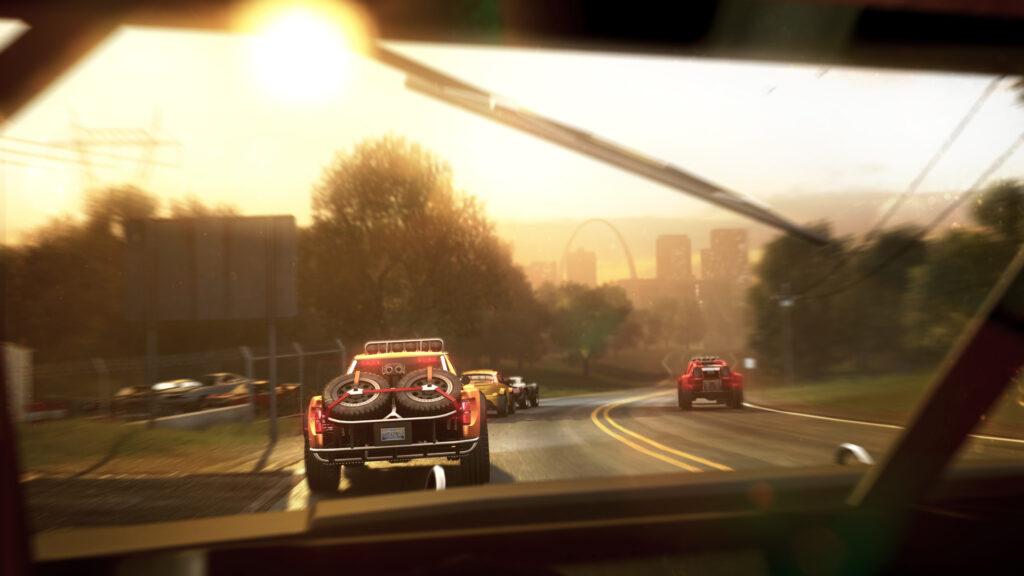
Also, the version that first launched required you to drive to the start of every event, which did become tedious if you kept failing, especially when you only had a few long events left to complete.
That was patched, which is fine. There’s also a little less scenic variety than in other Burnout titles, which is unavoidable when the city is set in just one country. The lack of true crash junctions is definitely lamentable, and the ‘showtime’ crash mode can’t make up for that.
Finally, DJ Atomica does a heck of a lot of talking, though I would argue that he’s well voiced, friendly, and that driving games don’t have enough spoken dialogue in them any more. Probably because it’s such a polarising feature, but there it is.
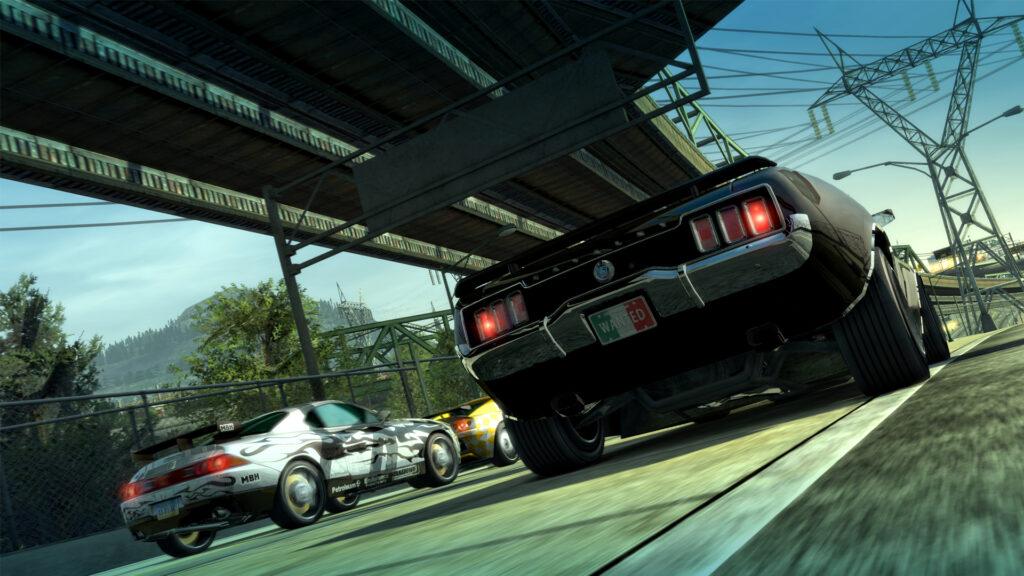
But is that diminutive list really reason to hate such an incredibly well-crafted game? Can anyone really load up Burnout Paradise and genuinely not have fun?
Every modern open-world racer can still learn something from it. It does beg the question, however: why hasn’t it been bettered?
We’ve had 15 years of technological progress in that time, so why aren’t modern games at least twice as good? It feels like we were on the verge of the perfect open-world racer in 2008, but every successive release has brought some level of disappointment. As with DiRT 2, it felt at the time like Burnout Paradise was ‘almost there’, but we had no idea we were at a peak and should have savoured the view while it lasted.
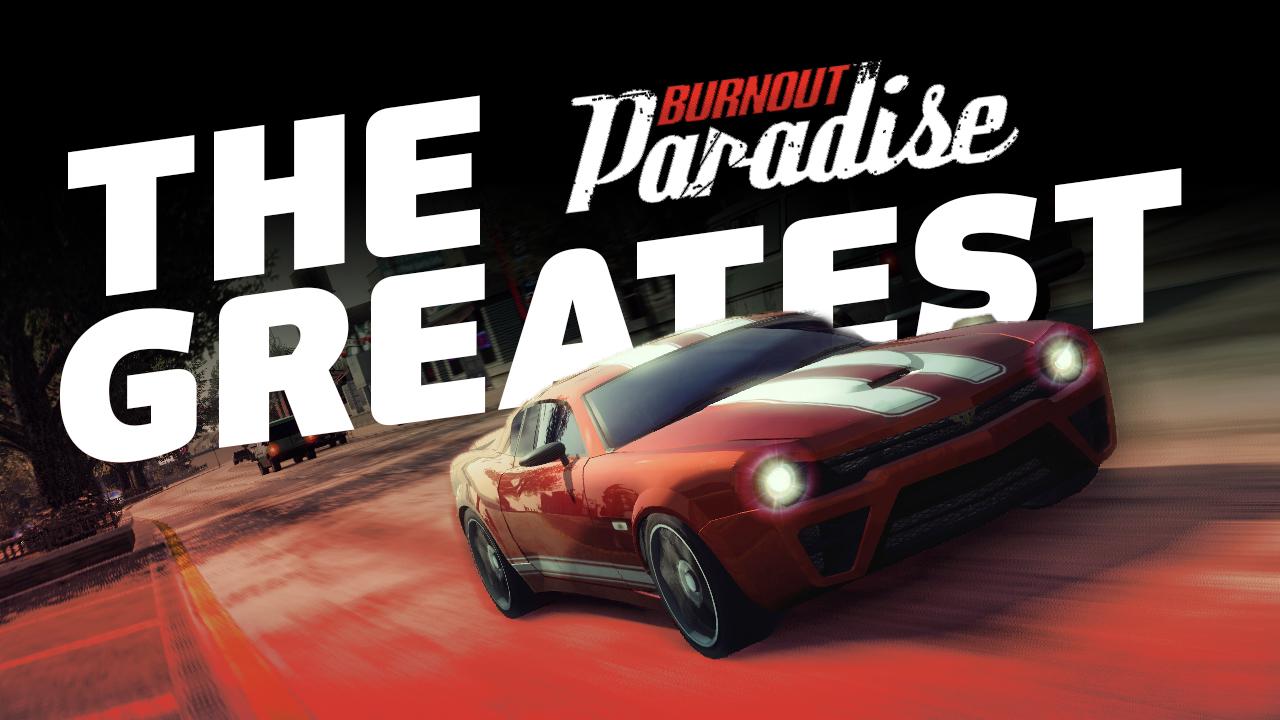




Chat with the Community
Sign Up To CommentIt's completely Free